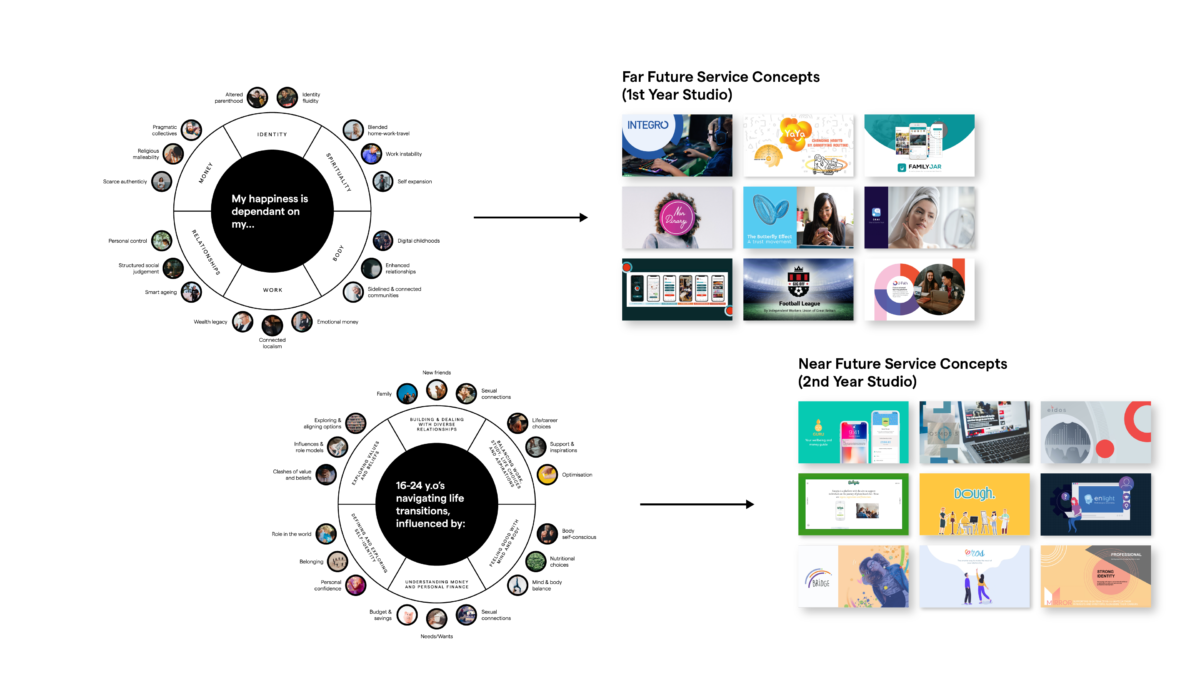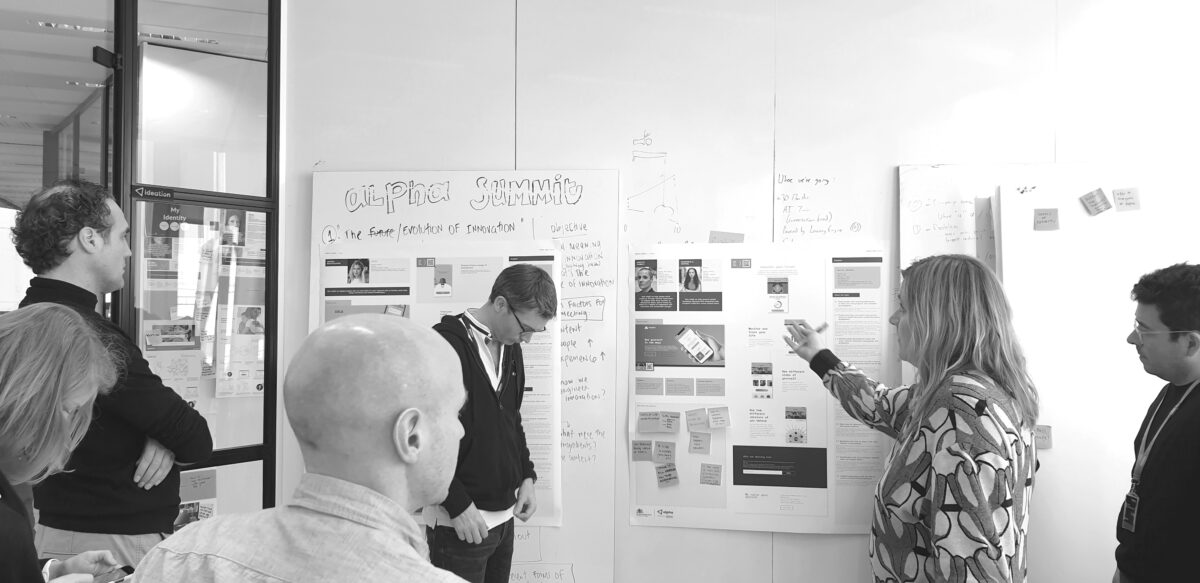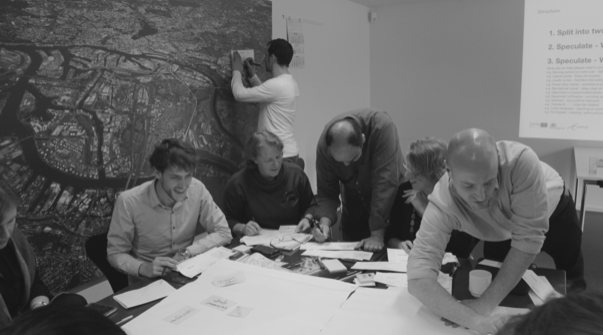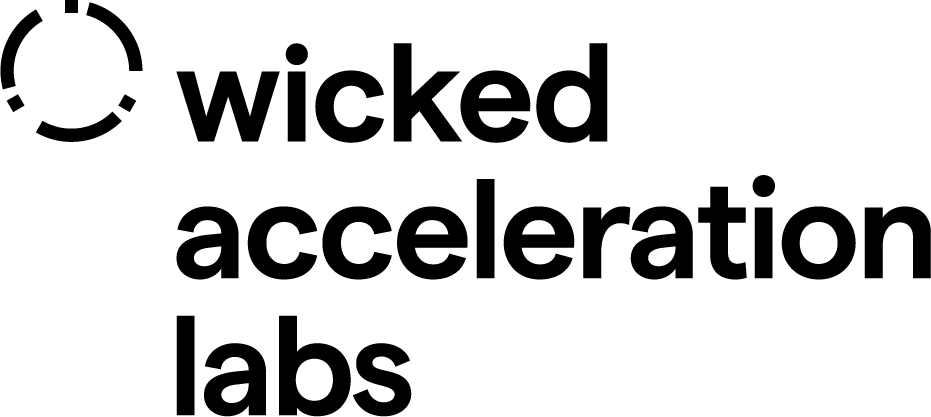Welcome to the methods bank
Understand and unpack your problems to create and implement strategic service propositions
What is the methods bank?
Here you will find innovation methods grouped in four phases. The aim of these methods is to mobilise talent and explore the boundaries of what can be done to create and implement viable, feasible and desirable service propositions that are aligned with the strategy.
Design-led innovation phases
This design-led innovation project proposes a novel service innovation process for moonshot design, validation and acceleration using an action-research through design approach.
01
Envision Future Scenarios
In this initial phase, the lab depicted potential future contexts that were of strategic value to the organisation. A future scenario is like a story that illustrates a possible future. The lab team believes a scenario should have a context, a persona (an abstract representation of a user) and a short narrative of how this persona interacts with the context.
02
Explore Service Visions
This second phase is about expanding the organisation’s collective imagination around the services that could emerge in future contexts by creating concepts of future services. An exploration is an excursion within a future scenario. The artefacts we find are provocative future service concepts brought about by interactions between future people and their future contexts.
03
Design Value propositions
This phase concentrates on turning the potential services of phase 2 into concrete experiences. In this way, the users experience the services, while allowing the lab to experiment. A proposition is a future service that is prototyped in the present context in order to test our hypotheses about who the user might be and how they might value it.
04
Deliver Live Services
The task of this phase is to convert the concepts into live services that can operate as ‘minimum viable’ versions of their future potential, (i.e. a service that functions just enough to meaningfully trial the value proposition). Live services are solutions brought into the current market to be tested for impact and engagement with users and developed in an iterative process to explore viability and what it may mean for the future.This phase contains two units:
1. Envision Future Scenarios
Explore the units within phase one of the innovation process.
ENVISION SCENARIOS
UNIT 1: DEFINING THE SCOPE FOR THE EXPLORATION
This unit covers the research that resulted in trend tools, which helped to understand and expand the organisational imagination of potential future contexts and create a framework to organise the lab’s thinking on the different dimensions of societal change.
2. Explore Service Visions
Explore the units within phase two of the innovation process.
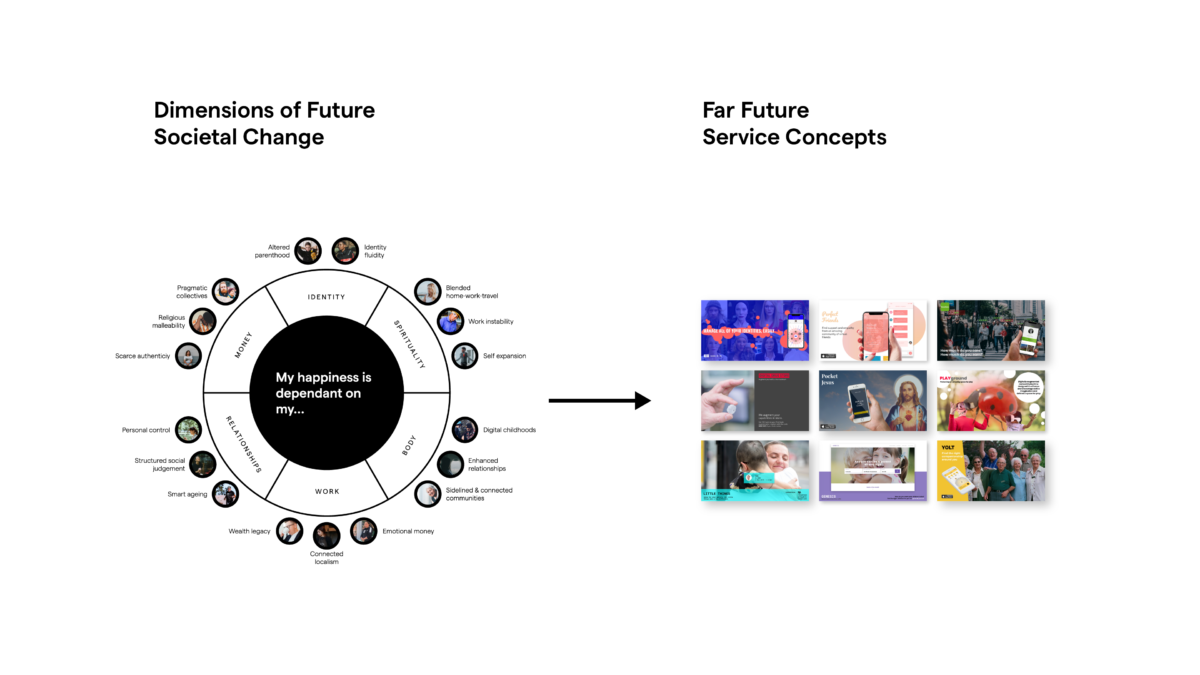
Explore Service Visions
UNIT 1: Conducting lab explorations
The lab team worked to develop visions of ‘far future’ services that responded to the scenarios and design challenges created in the previous phase. Service visions facilitate imagining the tangible possibilities of a future that may arise.
3. Design Value Propositions
Explore the units within phase three of the innovation process.
